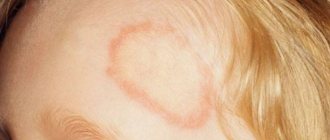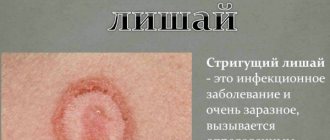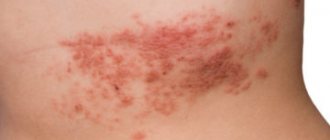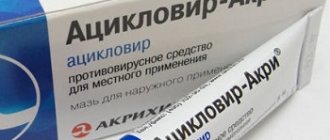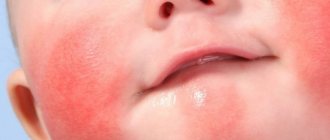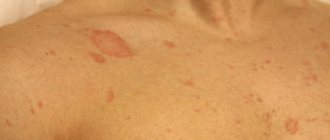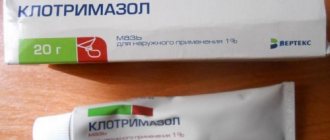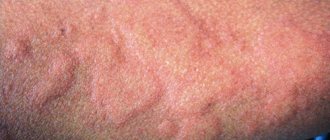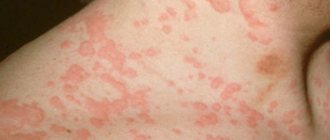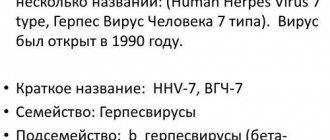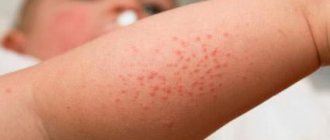What is feline ringworm
Feline lichen (or, as it is called in medical sources, ringworm, microsporia) is a skin disease caused by a fungus and transmitted by contact, that is, through touch. Most often, it is carried by cats, which is why the disease got its name.
The main types of lichen in humans
Depending on the causes of appearance, symptoms, and treatment features, several types of lichen in people are distinguished:
- Lichen planus. It is characterized by the appearance of rashes in the form of redness and ulcers. It is most often localized on the elbows, in the lumbar region, lower abdomen, groin area, and armpits. It can also appear on mucous membranes, for example, in the oral cavity. The rashes are often multiple, arranged in groups, forming something like a garland on the human body. Women aged 50–60 years and people with diseases of internal organs are most susceptible to infection. This lichen is dangerous because without proper treatment it can become chronic or develop into a malignant tumor.
- Pityriasis rosea (Gibera). Most often it appears in a person after an infectious disease. It is characterized by the appearance of large pink spots on the human body. At first, only one appears, called the maternal one, and it gradually increases in size. After one to two weeks from the onset of the disease, the skin becomes covered with pink spots of smaller sizes, and mild itching is observed.
- Shingles (herpes zoster). A viral disease that mainly affects people with reduced immunity, HIV-infected people, and people who did not have chickenpox in childhood. It is characterized by the appearance of large, swollen pink spots, which within 3–4 days turn into vesicles with transparent contents. The disease is accompanied by very strong pain, which can persist several weeks after treatment.
- Pityriasis versicolor. Also called versicolor. It is characterized by the appearance on the human body of discolored spots or spots of brown or pink color. The color may change over time and elements may peel off. This fungal infection does not require complex treatment and often goes away on its own.
- Ringworm. It is a highly contagious (contagious) infectious disease of the skin, hair or nails caused by pathogenic fungi. The infection can be caused by two types of microorganisms - Trichophyton and Microsporum. The correct designation of the disease is based on the name of the fungus that caused it, so doctors distinguish trichophytosis and microsporia. Ringworm is also called dermatophytosis, ringworm, or dermatophytosis. Trichophyton fungi are microbes that parasitize only the human skin, while Microsporum infects both humans and animals. Ringworm is most contagious in children 4–13 years of age.
Photo gallery: manifestations of different types of lichen
Lichen planus is characterized by grouped rashes
Pityriasis rosea often appears after infectious diseases.
Pityriasis versicolor often goes away on its own
Shingles is caused by the herpes virus
Ringworm is most contagious in children
Causes and symptoms
The infectious pathogen lives in the soil, which is why a cat or dog, moving on the ground, can easily catch lichen. The disease spreads from cat to cat due to contact with stray sick animals. You can infect a cat that is not in the yard using shoes, a stroller, a bicycle, or toys that children take into the sandbox. It often happens that lichen occurs in a kitten, a pregnant cat, an animal with poor immunity or affected by helminths. Among cats, the most common types of illness are ringworm, pityriasis versicolor, and pityriasis rosea, which is caused by a type of herpes virus.
Manifestations of the disease:
- reddish spots on the skin with a diameter of 1-5 cm, in place of which hair begins to fall out;
- gradual increase in the affected area;
- frequent scratching of itchy areas;
- the appearance of flaky crusty rashes on bald spots;
- unhealthy appearance;
- lack of appetite.
Causes of ringworm
There is an opinion that feline lichen appears if you pet a stray cat. But this is not true at all. Almost every person is at risk of contracting this disease. The fungus that causes ringworm can be carried by your pet if you let it outside, as well as by you on the soles of your shoes or clothes. It should be noted that this type of microorganism is very resistant to various disinfectants and can stay in your home for up to two years, so both your pet and you will always be at risk.
People with weakened immune systems are most susceptible to contracting feline ringworm.
Those at risk with a high probability of becoming infected are:
- children under fourteen years of age;
- pregnant and lactating women;
- people with weakened immune systems, for example, who have recently had another infectious disease.
Healthy adults can also become infected, but the fungus does not cause the development of the disease in them, since it is destroyed by immune cells or washed off from the surface of intact skin during hygiene procedures.
Video: how cat lichen is transmitted to humans
Drug treatment of lichen
To establish an accurate diagnosis, it is not enough for a doctor to simply conduct a local examination; he will need to take special tests.
This will help determine the level of development of the pathology and its type. The treatment process can be carried out both on an outpatient basis and in a hospital setting. During the process of undergoing medical therapy, it is worth limiting all contacts with animals, and more importantly, completely curing all pets .
Doctors use a strictly comprehensive method of control to eliminate lichen. This is the only way to count on getting a quick positive result.
Here are the basic rules for treating feline ringworm:
- The affected areas must be treated with ointments and iodine-based solutions.
- A special diet is prescribed.
- You should not take a bath during treatment, and especially not rub the affected area with a washcloth.
- During treatment, special immunomodulators and antifungal drugs are taken.
Such complex treatment is guaranteed to give the most positive results. Feline lichen goes away very quickly and it is possible to avoid quite serious complications
As for medications, in the treatment of a disease such as feline ringworm, medications are prescribed that have proven their effectiveness over the years.
As a rule, special antifungal creams and ointments are prescribed. Related article:
How to treat lichen in children? Photos, symptoms, causes
These are drugs such as Lamisil and Ketonazole, as well as the usual Sulfur Ointment. Among the popular iodine-containing solutions are “Iodoform”, “Iodinol” and “Iodopyrom”.
Tablets in the treatment of feline lichen may be as follows::
- Fluconazole;
- Itraconazole;
- Terbinafine;
- Lycopid;
- Tamerite;
- Amiksin.
The first three drugs are aimed directly at eliminating fungal spores, the next three drugs are aimed at increasing immunity. The dosage of medications is determined strictly individually.
Correctly prescribed and taken medications are important. It is equally important to carefully follow your doctor's recommendations and lead a healthy lifestyle . It is necessary to eat healthy, proper foods, it is advisable to avoid fried, salty and fatty foods , especially during treatment.
Important! Self-medication when eliminating cat lichen is strictly prohibited. This will not only not give a positive result, but will have a negative effect on the body as a whole.
Symptoms of feline lichen in humans
Symptoms depend on the form of the disease and the pathogen. Doctors identify the following localization of rashes:
- skin of the arms and legs, feet, palms and hands;
- torso;
- fingernails and toenails;
- armpits;
- inguinal folds;
- skin on the face;
- scalp skin.
When the fungus develops, bald patches form on the scalp, hence the name ringworm.
Usually a person can observe the following symptoms:
- Ring-shaped spots appear on the body. The elements become noticeable a few days after infection, their color is pink or red, and they can itch very much.
- Bubbles form near the spots, leaving behind a crust and areas of peeling.
- If there is hair in the affected area, it breaks and falls out.
- There is often a feeling of drowsiness, and sometimes the body temperature rises. You may also notice inflammation of the lymph nodes.
Features of the disease in children
Children suffer from this disease much more often than adults. The main category of those affected are children from three to eight years old. Symptoms in children differ little from those in adults.
Among the features, it can be noted that children experience the disease more acutely, they have more developed inflammatory processes on the skin, and suppuration appears more often. This happens because children's skin is thinner and more sensitive. Accordingly, the older the child, the easier he tolerates the disease.
Ringworm in a child occurs in a more acute form
How is the disease transmitted from animals to people?
The causative agents of cat lichen can be present for a long time in fur, toys, and even in pet bedding. At first, the spores exist on their own, and then they begin to infect animals and humans. They get on the hairline and begin to be instantly absorbed into the skin, where they multiply at tremendous speed. After a few days, you may notice red, white or pink spots on the animal's body. Afterwards, hair falls out at the site of the lesion, and the skin peels off. This appearance negatively affects the appearance of the pet, but the aesthetic problem is not the main one in this situation. Considered to be a cat's disease, ringworm is a fungal disease that can also be transmitted to humans. The fungus is very flexible and resilient. It feels as comfortable as possible on the human body, causing inflammation of the skin. When an unhealthy person and an infected animal come into contact, there is a huge risk of transmitting the disease, especially for people with reduced immunity and children from four to 15 years old.
A diagnosis must be made immediately, at the first suspicion, and the sooner the fight against the disease begins, the better. Usually, the treatment process takes a long time, so it is very important to complete it. Most often, the disease affects the skin and hair.
Diagnostic methods
To diagnose the pathology, you should consult a dermatologist. He conducts an initial examination of the lesions.
To confirm the assumption of ringworm, the following studies are carried out:
- Inspection using a Wood's lamp emitting ultraviolet light. On the head, in areas affected by the fungus, the hair has a slight greenish tint. This method is good because it is possible to determine the disease, even if only one hair is infected.
- The diagnosis can be clarified using bacteriological examination. For scraping, hair scales and stumps are taken, which are examined under a microscope for the presence of microorganisms in them. Fungal spores and mycelium are usually found in the upper layers of the skin.
The areas affected by ringworm glow under a fluorescent lamp
It is also necessary to differentiate from skin pathologies with similar external signs:
- when the disease is localized on the scalp, differentiation is made with alopecia;
- the cutaneous location of ringworm should be distinguished from eczema and psoriasis;
- the chronic form is differentiated from candidiasis, acne, psoriasis and eczema of the nails, as well as lichen planus are excluded.
Possible complications
After ringworm, complications can occur, both mild and serious. It all depends on the pathogen and the degree of neglect of the skin lesion, on the effectiveness of therapeutic measures. If treatment is not started immediately, deep damage to the hair follicles by the fungus may occur, then there is a possibility that hair may no longer appear in these places.
This does not harm health, but it brings significant discomfort to a person in an aesthetic sense. Therefore, if you suspect lichen, start proper treatment immediately and do not expect the disease to go away on its own.
Taking medications for ringworm on your own can only cause harm and lead to serious complications.
Yellowish discharge during pregnancy, differences at different stages
Discussion: 2 comments
- Eliza:
01/15/2018 at 13:20A veterinarian I know once told me that people most often infect animals with lichen, therefore, if the disease manifests itself in a person, the animal must be urgently isolated so that it does not become infected. When my brother had lichen, my mother lubricated the inflammation with glass, collected it on cotton wool and generously smeared the lichen. It all goes away in a couple of weeks.
- Mokina Sveta:
01/26/2018 at 10:54
I had feline lichen. Not a pleasant thing, I tell you. Sulfur ointment helps very, very well. It was recommended by a doctor at a local clinic. I can recommend this product.
Prevention of feline lichen
As a preventive measure, it is necessary to promptly identify foci of the disease and isolate infected representatives . Also recommended:
- Disinfect personal items and systematically examine children and pets.
- Observe personal hygiene rules.
- Take vitamin complexes in the autumn-winter period on your own or after consulting a doctor.
- If there is a risk of infection, regular sanitary cleaning of premises with chlorine-containing disinfectants will be useful.
- If domestic dogs and cats live in the country in the summer, they must be scanned with a Wood's lamp for the presence of trichophytosis or microsporia.
Ringworm is a harmless but very unpleasant disease. It can affect every person who neglects the rules of personal hygiene. And if your pet gets away with a small amount of broken hairs, then the person risks losing all his hair in a very short time. Therefore, it is important to take preventive measures in time or consult a doctor in a timely manner for treatment.
Danger of fungus
In addition to the general weakening of an already weakened body, fungal spores are dangerous due to their high contagiousness - they are transmitted through soil, furniture, fabrics, and toys. The disease appears at least on day 5, maximum after 6 weeks, depending on the type of fungus.
That is, if yesterday your child petted a stray kitten on the street, this does not mean that the kitten is the cause of microsporia spots appearing in your baby today.
The cause of your unvaccinated pet's illness may be spores brought from the street, from kindergarten or school by a child.
The main difficulty in getting rid of spores is not the treatment itself, although sometimes it’s a pity to part with long hair, but the destruction of the infection in the house. If an animal is sick, it must be placed in a separate room, the child must not have contact with it, since children under 12 years of age are most often infected, and when treating the affected areas, wear a special set of clothes.
Carry out wet cleaning every day, it is advisable to use a steam generator, do not use a vacuum cleaner. Spores are destroyed by quartzing the room, products containing chlorine, vinegar, iodine, essential oils of lavender and citrus fruits. Linen must be boiled and ironed.
After finishing the treatment, burn the clothes and the animal's bed.
